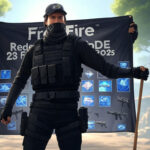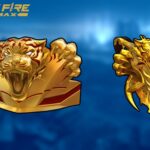How Was the Atomic Bomb Made?
The idea for the atomic bomb began with a small group of physicists, including Albert Einstein, who lived on Long Island, New York. Together they wrote a letter to US President Franklin D. Roosevelt, which warned the government to avoid the use of atomic bombs. This letter reached the president in October, and he set up an Advisory Committee on Uranium to help develop the device. The first meeting of this committee took place on October 21, 1939, and the project was officially launched in 1945.
The Manhattan Project was a secret project, so the Axis powers didn’t know about it. But the Soviet spy Klaus Fuchs had a way of penetrating the inner circle at Los Alamos. As a result, the Manhattan Project was able to develop the technology necessary to create the atomic bomb. It was the first time an atomic bomb had been made. It exploded on impact, killing millions of people. The resulting radiation and heat caused a chain reaction in which more neutrons were produced.
During World War II, the United States and the Soviet Union developed a series of atomic weapons to defeat the Axis forces. After the Allies launched their attack, the Manhattan Project was halted, and the Axis powers were unaware of the project. The United States and the Soviet Union were able to defeat the Axis powers after the U.S.S.S. Indianapolis departed from San Francisco with components of the first atomic bomb. This bomb was called Little Boy and was supposed to be dropped on Tinian. C-54 aircraft and B-29 aircraft carried components of the Fat Man bomb, which was to be dropped on a second Japanese city.
The atomic bomb designed
The atomic bomb was designed to be self-sustaining. It consists of a fissile element, like uranium. It produces more neutrons than it consumes, and the nuclear reaction is self-sustaining. Once it is launched, it creates a mushroom cloud that is 40,000 feet high. It also creates a half-mile-wide crater in the desert. Its crater is half a mile wide.
The atomic bomb was created in Los Alamos, New Mexico, and was tested there in 1942. The scientific director, J Robert Oppenheimer, was a complex figure with a porkpie hat, and his staff was renowned for their work. Many scientists and engineers were at Los Alamos to escape Nazi persecution in Europe. This team produced the Trinity bomb, which was a remarkably effective weapon.
The atomic bomb was first tested at Site Y, a facility in New Mexico. The first test was named after John Donne, who was reading the Holy Sonnets the night before the test. The atomic bomb was named after the poet’s poem, “Batter my heart, three-personed God.” It exploded in the sky and killed a person. But the atomic bomb did not go off in flight. Unlike most aircraft, it was created in the laboratory, and was used by a nuclear explosion.
Atomic Bomb history
The atomic bomb was developed by the United States during the Second World War. The atomic bomb produced an explosion that lasted for a few seconds and destroyed everything in its path. The U.S. developed two types of atomic bombs during the war: Fat Man and Little Boy. The latter was a gun-type weapon and the first was a plutonium implosion. Both were built to a small scale.
The atomic bomb was first developed at Site Y in Los Alamos, New Mexico. The scientific director of the facility, J Robert Oppenheimer, was known for his pork pie hat and complex personality. This team of scientists worked to develop the Trinity atom-bomb, and then he and his team began building the atomic bomb. However, the atomic bomb was only the first one to be developed by the United States.
During the Second World War, the U.S. Army Corps of Engineers took over atomic weaponry production on the Home Front. The Manhattan Engineer District was created, named after the city of New York. It was headed by Colonel Leslie R. Groves, who was later promoted to Brigadier General. The American military found that there were three main sites for atomic bomb manufacturing. Despite the massive scale of these facilities, the process took a year to develop.
Different types of Nuclear Energy
Two ways the energy of nuclear atoms can be expelled from the atom
- Nuclear fission The nucleus of an atom gets split into two smaller pieces through neutron. The process usually includes isotopes of the Uranium (uranium-235 or the uranium-233) and the plutonium (plutonium-239).
- Nuclear Fusion two smaller atoms are joined generally either hydrogen, or isotopes of hydrogen (deuterium tritium, deuterium) to create an even greater one (helium isotopes) This is the way the sun creates energy.
Atomic Bomb Atomic Bomb
Atomic fissionproduces the Atomic bomb, which is an arsenal of mass destruction made by the power generated by the breaking of nuclear nuclei.
When a single , free neutron hits the nucleus of an atom of radioactive material , such as plutonium or uranium causes two or neutrons off. Energy is released as those neutrons break away from the nucleus. Then, the released neutrons hit other nuclei of uranium or plutonium and split into two pieces release additional energy as well as more neutrons. The chain reaction can spread nearly instantly.
Atomic bombs were detonated during the war between Hiroshima in Japan and Nagasaki towards the end in World War II. Devastation in Hiroshima
It is the Hiroshima Bomb
Due to its lengthy slim shape due to its long, thin shape, due to its thin, long shape Hiroshima bomb was referred to as “Little Boy”. The primary material was of uranium in the amount of 235. There is a theory that the fission less than one gram of uranium235 released the energy equivalent to about 15,000 tonnes of TNT.
It was the Nagasaki Bomb
In comparison to the bomb employed in Hiroshima and Hiroshima, it was Nagasaki bomb was more round and tastier. It was known as ‘FatMan’. The substance used included plutonium239. The fission of less than one kilograms of plutonium is believed to produce destructive energy equal to approximately 21,000 tonnes of TNT.
Hydrogen Bomb Hydrogen Bomb
Ivy Mike Hydrogen Bomb – Photo courtesy of National Nuclear Security Administration, Nevada Site Office
Nuclear Fusionis an reaction that releases energy via the joining of light nuclei at high temperatures to create heavier atoms. Hydrogen bombs that make use of nuclear fusion, possess more destructive power and higher efficiency than nuclear bombs.
Due to the extremely high temperatures needed to start the nuclear fusion reaction, this process is usually described as an explosion of thermonuclear energy. It is usually done using hydrogen isotopes (deuterium as well as tritium) which fusion together to create Helium atoms. This is the reason for the term “hydrogen bomb” to refer to the tritium-deuterium Fusion bomb.
A hydrogen bomb for the first time ignited on November 1, 1952 on the tiny Island of Eniwetok within the Marshall Islands. The power of the blast was Megatons of TNT. The blast created a bright more powerful than one thousand solar rays, and the sensation of a heatwave that was felt for 50 kilometers away. In the Soviet Union detonated a hydrogen bomb within the megaton range during August 1953. The US detonated an explosive 15 megaton hydrogen bomb 1 March 1954. The explosion was 4.8 kilometers in diameter. It caused a massive mushroom-shaped cloud.
The Impacts of a Nuclear Weapon
If any of these explosives were ever to be used, the effect would be devastating. Atomic Burns from Hiroshima Blast
The core of a nuclear explosion is at many million degrees Celsius. The subsequent heat flash literally evaporates the human body’s tissues. Anyone who is in buildings or protected will be injured due to the heat and blast when buildings fall apart and flammable materials explode in fires. People who live in underground shelters and are able to survive the initial flash of heat will die when all oxygen escapes from the air.
In the absence of complete destruction, there will be slowly increasing proportion of immediate survivors. Most of them will be suffering from severe burns, and will suffer from blindness, bleeding, and suffer horrific internal injuries. The survivors will be affected in a the space of a few days due to radiation fall-out. The cancers that result from radiation can take a toll on many, usually over 20 years later.
Nuclear weapons can cause serious damage to the environment and the climate on a scale that is incomparable to any other weapon. The Red Cross estimates that a billion people in the world may be in danger of starvation as the consequence of nuclear war.
 Skip to content
Skip to content









